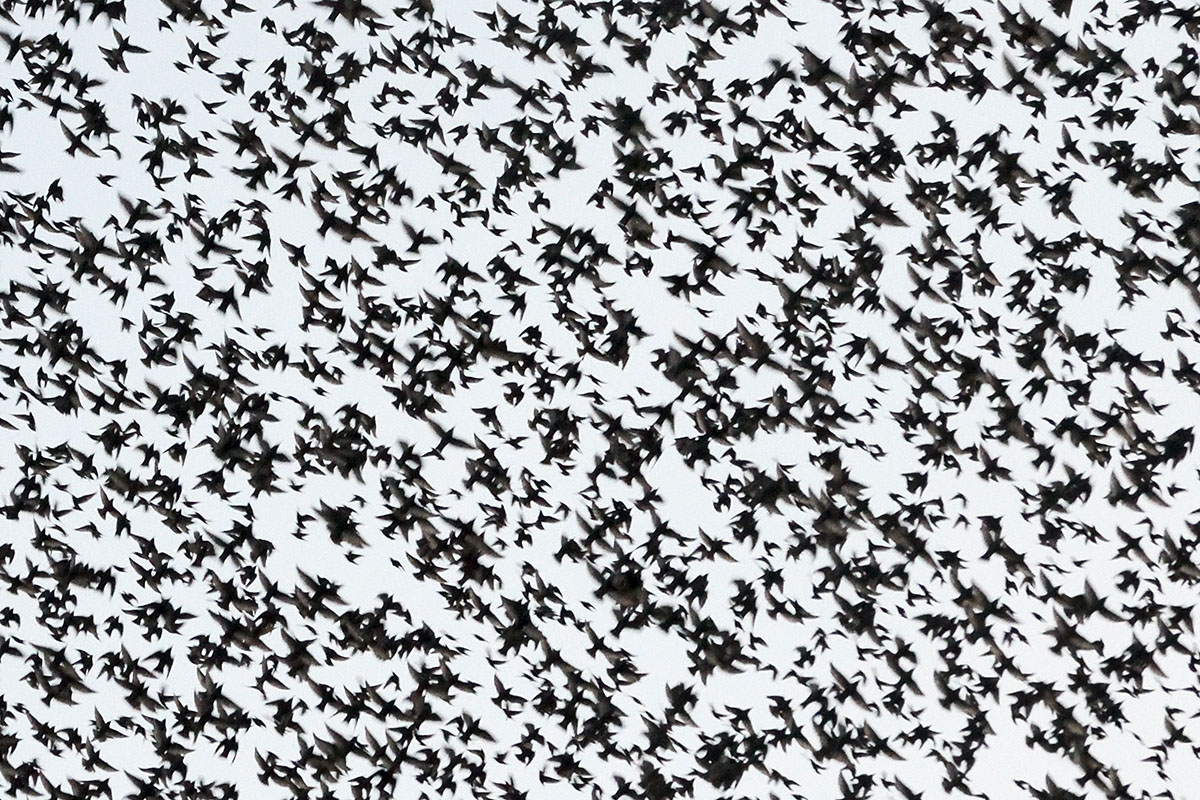A murmuration of starlings in mid-air is one of the greatest wildlife spectacles in Central Europe. With awe I love to watch this breath-taking wonder, the pulsating mass of fast-moving birds, seemingly defying the laws of nature. A few spectacular examples of starling murmurations can be seen on this New York Times website.
About 90 years ago it was suggested that birds moving in murmurations were using some sort of telepathy to transmit their flying intentions. In the 1950s, scientists argued that group movement is a fast response to neighbors in the flock rather than some innate mind-reading ability or a command from a group leader.
Later, hundreds of photos and videos were taken to plot the position and speed of birds in murmurations. From those, a mathematical model was built that identified the optimal number of flock-mates for each bird to track.
Turns out the magic number is seven: Each bird keeps tabs on its seven closest neighbors and ignores all else. Considering all these little groups of seven touch on other individuals and groups of seven, twists and turns quickly spread. And from that, a whole murmuration moves. These findings were published in the journal PLOS Computational Biology in January 2013.
